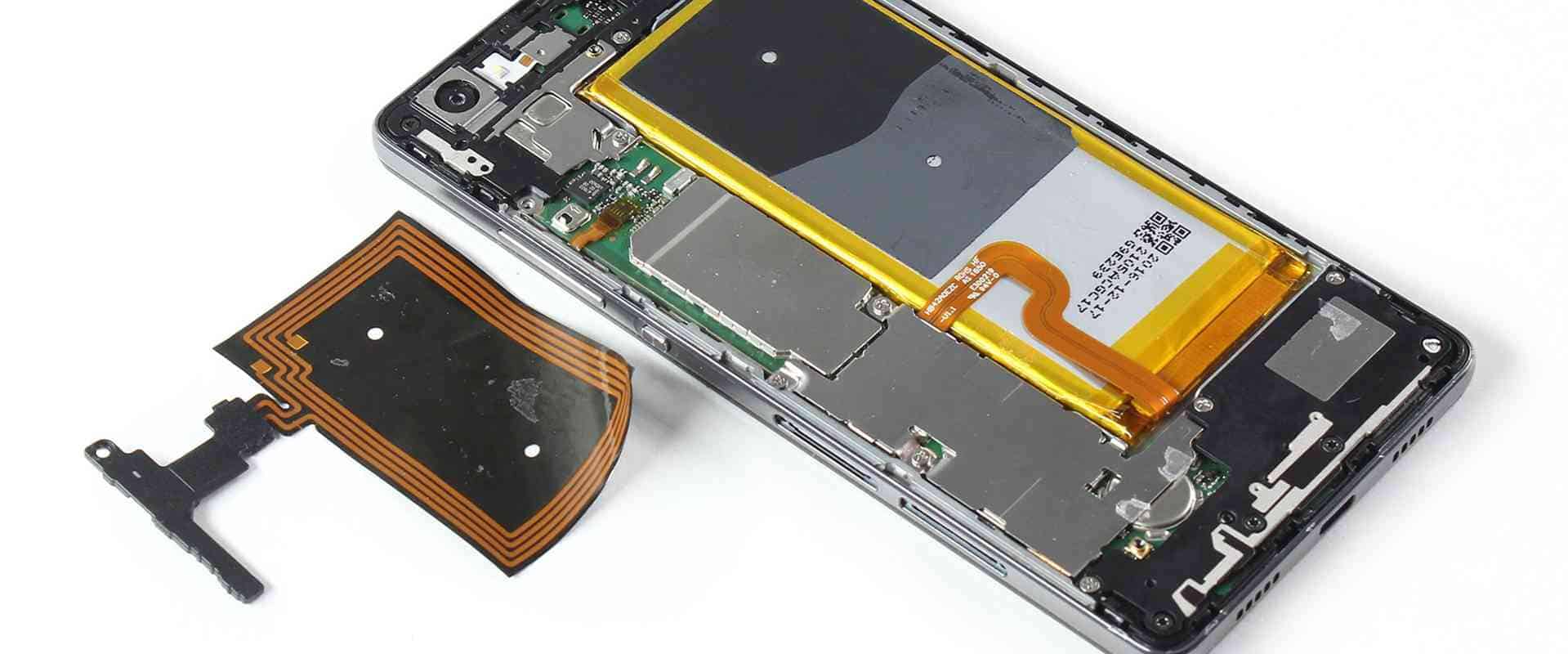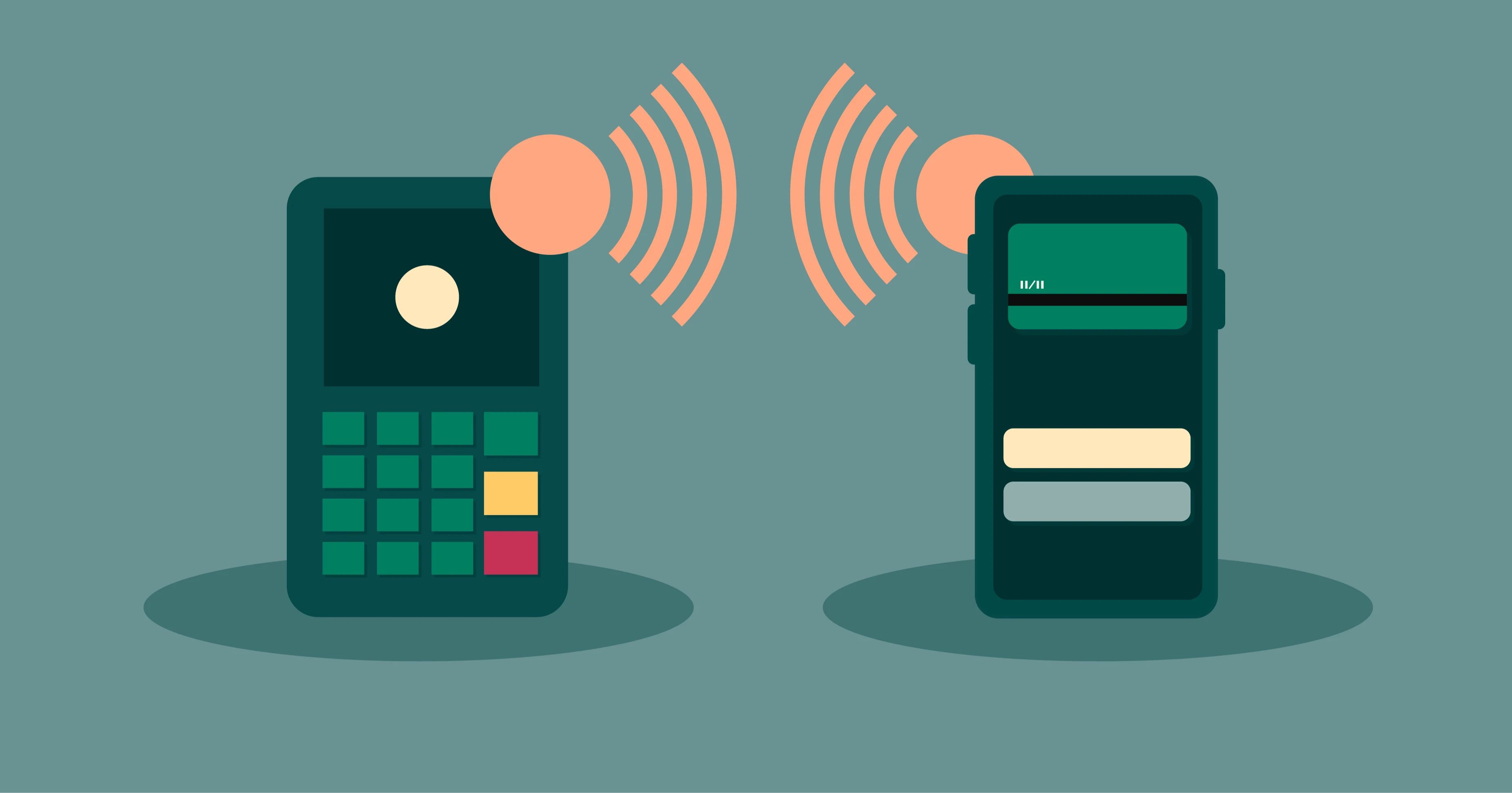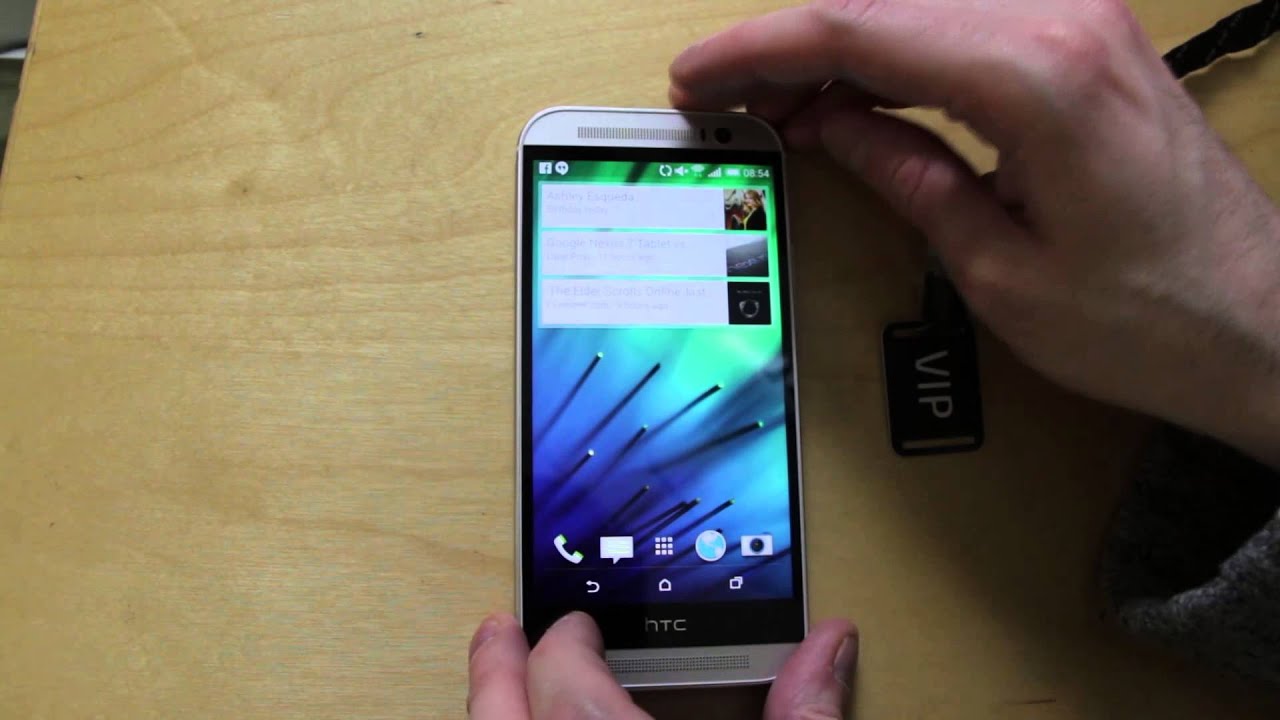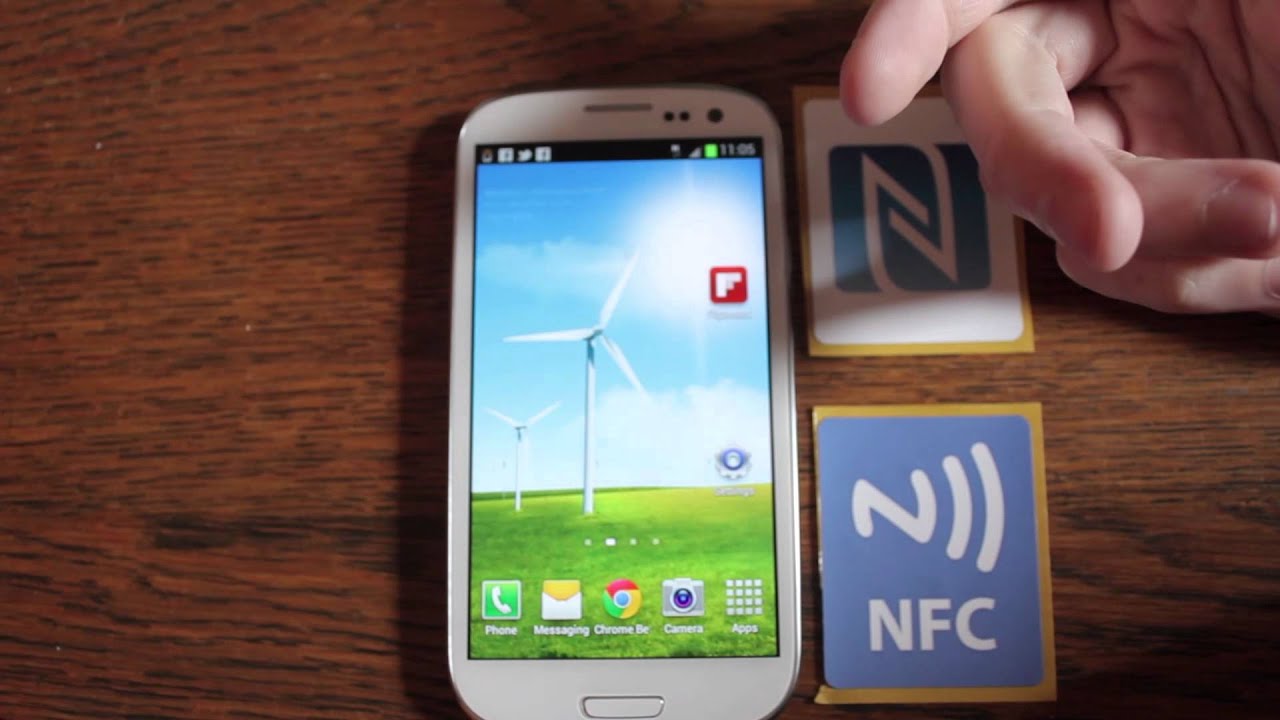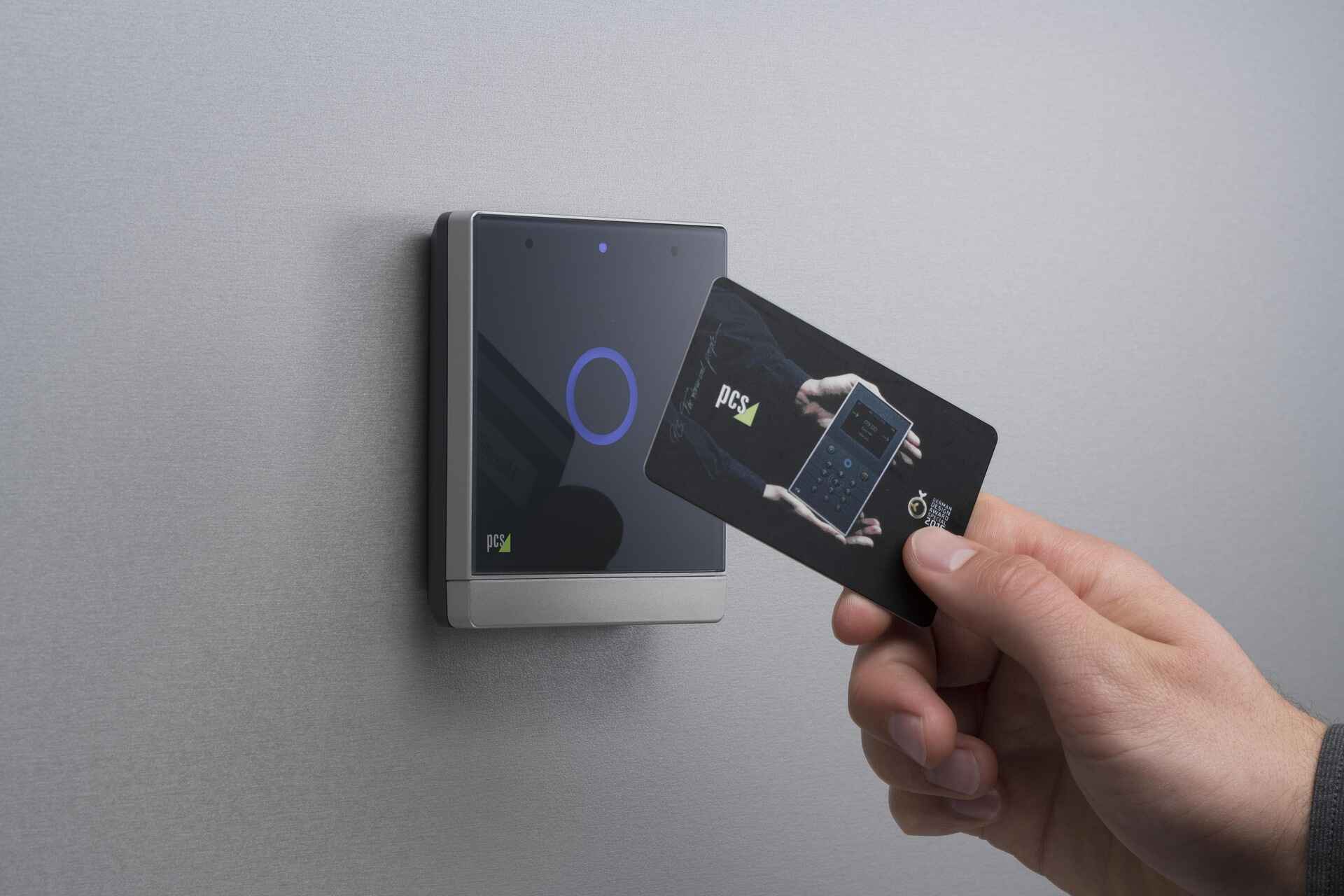Introduction
Near Field Communication (NFC) technology has become increasingly prevalent in our everyday lives. From making mobile payments to exchanging files, NFC offers a convenient and secure way to interact with a wide range of devices. At the heart of this technology lies the NFC antenna, which plays a crucial role in enabling communication between devices.
NFC technology was first introduced in the early 2000s and has since gained significant popularity due to its simplicity and versatility. It allows for wireless communication between devices over short distances, typically within a few centimeters. NFC is now commonly found in smartphones, tablets, wearable devices, and even contactless payment cards.
An NFC antenna is an essential component of any NFC-enabled device. It acts as the interface between the device and other devices or tags in its proximity. The antenna is responsible for emitting and receiving the radio frequency signals required to establish communication.
The primary purpose of an NFC antenna is to facilitate communication by creating a near-field electromagnetic field. When an NFC-enabled device is brought close to another NFC device or tag, the antenna generates an alternating magnetic field. This magnetic field induces a current in the secondary coil of the receiving NFC device or tag, allowing the exchange of information.
There are several types of NFC antennas available, each designed to suit different applications and form factors. Some common types include loop antennas, printed antennas, and ferrite sheet antennas. These antennas vary in size, shape, and performance characteristics, depending on the specific requirements of the device.
NFC antennas are used in various applications, such as contactless payments, access control systems, ticketing, and data transfer between devices. The widespread adoption of NFC technology has made these antennas an integral part of our everyday lives, enabling seamless interactions with a range of connected devices.
However, designing effective NFC antennas can be challenging due to factors like antenna size, materials used, and interference from surrounding components. The position and orientation of the antenna within the device also impact its performance. Engineers and designers must carefully consider these factors to optimize antenna performance and ensure reliable communication.
In this article, we will explore how NFC antennas work, the different types available, their common applications, and the design considerations and challenges associated with their implementation. Understanding the NFC antenna’s role and functionality will provide valuable insights into the technology that drives our increasingly interconnected world.
What is NFC technology?
Near Field Communication (NFC) is a short-range wireless communication technology that allows devices to exchange data when they are within close proximity to each other. It is a subset of Radio Frequency Identification (RFID) technology and operates at a frequency of 13.56 megahertz (MHz).
NFC technology enables two-way communication between devices, meaning that both devices can send and receive data. It utilizes electromagnetic induction to transfer information, which means that the devices do not need to be physically connected or aligned precisely. Instead, they only need to be brought close to each other, usually within a few centimeters, to establish a connection.
One of the defining features of NFC technology is its simplicity. It allows for seamless and intuitive interactions between devices, making it ideal for a wide range of applications. NFC is widely used in contactless payment systems, where users can simply tap their NFC-enabled smartphone or smart card on a payment terminal to make a transaction.
In addition to payment systems, NFC technology is utilized in various other applications. It enables quick and easy pairing of Bluetooth devices, such as headphones or speakers, by simply tapping them together. It is also used in public transportation systems for contactless ticketing, allowing passengers to quickly board buses or trains by waving their NFC-enabled travel cards.
NFC technology can also be used for data transfer between devices. For example, sharing files, contacts, or photos between smartphones can be done by bringing them close together and initiating the transfer using NFC. This eliminates the need for physical cables or complex setup procedures.
In summary, NFC technology is a wireless communication technology that allows devices to exchange data when they are in close proximity to each other. It simplifies interactions between devices and is commonly used in contactless payment systems, ticketing systems, Bluetooth pairing, and data transfer. The simplicity and versatility of NFC technology have made it an integral part of our daily lives, enabling convenient and secure interactions with our digital devices.
What is an NFC antenna?
An NFC antenna is a component of an NFC-enabled device that facilitates wireless communication using Near Field Communication (NFC) technology. It acts as the interface between the device and other devices or NFC tags in its proximity. The antenna plays a crucial role in emitting and receiving the radio frequency signals necessary for establishing communication with compatible devices.
The NFC antenna operates by creating a near-field electromagnetic field, allowing for short-range communication. It generates an alternating magnetic field when an NFC-enabled device is brought close to another NFC device or tag. This magnetic field induces a current in the secondary coil of the receiving NFC device or tag, enabling data transfer and interaction between the devices.
There are different types of NFC antennas available, depending on factors such as form factor, device size, and desired performance characteristics. Loop antennas are a common type of NFC antenna and consist of a wire loop or coil. They are particularly suitable for small devices, such as smartphones and smartwatches. Printed antennas, on the other hand, are manufactured using conductive ink or material and can be easily integrated into the device’s circuit board or casing.
Ferrite sheet antennas are another type of NFC antenna that utilizes a sheet of ferrite material with conductive traces. These antennas offer good performance while being compact and thin, making them suitable for devices with limited space.
The design and placement of the NFC antenna within the device are crucial for optimal performance. Factors such as antenna size, shape, and proximity to nearby components can affect its range and efficiency. Engineers and designers must carefully consider these factors to ensure reliable communication and a satisfying user experience.
Moreover, NFC antennas can be integrated into various devices to enable specific functionalities. For instance, in contactless payment systems, the NFC antenna allows for tapping the smartphone or payment card on a reader to initiate a transaction. In access control systems, an NFC-enabled card or device with an antenna is used to grant access to secure areas.
Overall, an NFC antenna is an essential component of NFC-enabled devices, allowing for wireless communication over short distances. Its design, placement, and type play a significant role in ensuring effective and reliable communication between devices. The use of NFC antennas has revolutionized various industries and applications, offering convenience and flexibility for users in their day-to-day interactions.
How does an NFC antenna work?
An NFC antenna operates based on the principles of electromagnetic induction. It generates and detects electromagnetic fields to facilitate communication between NFC-enabled devices. The antenna consists of one or more coils that allow for the transmission and reception of radio frequency signals.
When an NFC-enabled device comes into proximity with another NFC device or tag, the NFC antenna initiates the communication process by creating an alternating magnetic field. This magnetic field induces a current in the secondary coil of the receiving device or tag. This process of electromagnetic induction allows for the transfer of data and power between the devices.
The NFC antenna is designed to operate at a radio frequency of 13.56 MHz, which is the designated frequency for NFC technology. This frequency ensures compatibility and standardization across NFC-enabled devices.
When an NFC-enabled device’s NFC antenna emits an alternating magnetic field, it expects a response from the receiving device or tag. The receiving device’s NFC antenna detects the magnetic field and converts it into a small electrical current. This current contains the transmitted data from the transmitting device.
The NFC antenna plays a critical role in ensuring effective and efficient communication between devices. The design of the antenna, including its size, shape, and proximity to surrounding components, can influence the range and performance of the NFC communication. Optimizing these factors leads to better signal strength and more reliable connections.
It is essential to note that the effective communication range of NFC is limited to a few centimeters. This short-range capability adds an additional layer of security to NFC technology, making it suitable for applications like contactless payments and access control systems.
In summary, an NFC antenna operates by creating an alternating magnetic field that induces a current in the receiving device or tag. This process of electromagnetic induction allows for the transmission and reception of data between NFC-enabled devices. The design and placement of the NFC antenna are critical factors in ensuring optimal performance and reliable communication within the short-range capabilities of NFC technology.
Types of NFC antennas
There are several types of NFC antennas available, each designed to suit different applications, form factors, and performance requirements. These antennas vary in their construction, size, shape, and materials used. Here are some common types:
1. Loop Antennas: Loop antennas consist of a wire loop or coil that generates the magnetic field. They are commonly used in small devices such as smartphones, smartwatches, and contactless payment cards. Loop antennas can be round, rectangular, or customized to fit specific form factors.
2. Printed Antennas: Printed antennas are manufactured using conductive ink or material on a substrate, such as a PCB (Printed Circuit Board) or flexible material. They can be easily integrated into the device’s circuitry or casing, making them suitable for various form factors. Printed antennas offer flexibility in terms of design and can be customized to meet specific performance requirements.
3. Ferrite Sheet Antennas: Ferrite sheet antennas use a sheet of ferrite material with conductive traces to create the magnetic field. These antennas are thin, compact, and offer good performance. They are often used in devices with limited space, such as smart cards, access control systems, and small IoT (Internet of Things) devices.
4. Multilayer PCB Antennas: Multilayer PCB antennas consist of multiple layers of conductive material on a PCB. These antennas offer better performance and antenna efficiency compared to other types. They can be integrated into larger devices where space is not a constraint, such as tablets or laptops.
5. Chip Antennas: Chip antennas are small, compact, and typically come as surface-mount components. They are commonly used in small IoT devices, wearable devices, or compact electronic gadgets. Chip antennas have a wide frequency range and can be easily integrated into device PCBs.
These are just a few examples of the types of NFC antennas available. The selection of the appropriate antenna type depends on factors such as device size, performance requirements, form factor constraints, and cost considerations.
It is worth noting that the performance of an NFC antenna can be influenced by various factors, including surrounding materials, nearby components, and the device’s physical layout. Designers and engineers must carefully consider these factors and optimize the antenna design to ensure reliable NFC communication.
Common uses of NFC antennas
NFC technology and its antennas have been widely adopted in various industries and applications, providing convenience, security, and efficiency in day-to-day operations. Here are some common uses of NFC antennas:
1. Contactless Payments: One of the most prevalent uses of NFC antennas is in contactless payment systems. NFC-enabled devices, such as smartphones and smart cards, can be used to make secure, quick, and hassle-free payments by simply tapping them on payment terminals. The NFC antenna in these devices facilitates the communication and data exchange required for the transaction.
2. Access Control Systems: NFC antennas are commonly used in access control systems. NFC-enabled cards or devices with built-in antennas can be used to grant access to secure areas, such as offices, apartments, or hotel rooms. By tapping an NFC-enabled card or device on a reader, the antenna enables the verification of access privileges and grants entry.
3. Public Transportation: NFC technology is integrated into public transportation systems for contactless ticketing. Passengers can use NFC-enabled travel cards or their smartphones to quickly and conveniently pay for fares. The NFC antenna in the card or device interacts with the reader at the entrance, allowing for seamless and efficient boarding.
4. Bluetooth Pairing: NFC antennas play a role in simplifying the Bluetooth pairing process between devices. By tapping NFC-enabled devices together, such as smartphones and speakers, the NFC antenna initiates the pairing process and facilitates the secure exchange of pairing information. This eliminates the need for manual configuration or entering passcodes.
5. Data Transfer: NFC antennas enable the transfer of various types of data between devices. By bringing NFC-enabled devices close together, users can quickly and wirelessly exchange files, contacts, photos, and more. This feature is particularly useful in situations where sharing information between devices is required without the need for physical connections or complex setup procedures.
6. Product Authentication: NFC antennas are utilized in product authentication systems. By incorporating NFC tags with built-in antennas into products, manufacturers can provide a secure way to verify the authenticity of their products. Customers can simply tap their NFC-enabled devices on the product’s tag to access information and confirm its genuineness.
7. Smart Home Integration: NFC antennas can be used to integrate NFC-enabled devices into smart home systems. By tapping NFC-enabled devices, such as smartphones or tablets, on NFC-enabled smart home hubs or control panels, users can quickly configure and control various aspects of their smart home, such as lighting, security systems, and entertainment devices.
These are just a few examples of the common uses of NFC antennas. The versatility, convenience, and security offered by NFC technology have made it an integral part of various industries, providing seamless interactions and enhancing daily experiences for users.
Design considerations for NFC antennas
The design of an NFC antenna is critical to ensure reliable and efficient communication between NFC-enabled devices. Several factors should be considered when designing an NFC antenna for optimal performance:
1. Antenna size and shape: The size and shape of the NFC antenna affect its range and signal strength. Larger antennas generally have better performance but may not be suitable for small devices with limited space. The shape of the antenna, such as loop antennas or printed antennas, can also impact its performance and compatibility with the device’s form factor.
2. Proximity to other components: The positioning of the NFC antenna relative to other components within the device should be carefully considered. Nearby metallic or conductive materials can interfere with the antenna’s electromagnetic field, leading to signal degradation. Adequate spacing should be maintained to minimize interference and maximize performance.
3. Alignment and orientation: The alignment and orientation of the NFC antenna can affect the coupling and efficiency of the communication. Optimizing the antenna’s placement within the device can ensure better alignment with other NFC devices or tags, resulting in more reliable connections.
4. Material selection: The choice of materials used in the construction of the NFC antenna can impact its performance. Conductive materials with high conductivity and low resistance are preferred to minimize signal loss. The dielectric material surrounding the antenna should have low losses to maintain high signal strength.
5. Impedance matching: Proper impedance matching is essential for effective power transfer and signal transmission between NFC devices. Impedance matching circuits or components should be used to ensure optimal impedance matching between the antenna and the NFC IC (Integrated Circuit) to maximize power transfer efficiency.
6. Compliance with NFC standards: It is important to ensure that the NFC antenna design complies with NFC industry standards and regulations. Adhering to these standards ensures compatibility and interoperability with other NFC-enabled devices.
7. Testing and validation: NFC antenna designs should be thoroughly tested and validated to ensure their performance meets the desired specifications. Testing may involve measuring parameters such as impedance, resonant frequency, antenna efficiency, and signal strength.
By considering these design considerations, engineers and designers can optimize the performance and reliability of NFC antennas. Customizing the design according to the specific requirements of the device and its intended application will lead to efficient NFC communication and a better user experience.
Challenges and limitations of NFC antennas
While NFC technology and antennas offer numerous benefits, there are some challenges and limitations that designers and engineers need to consider:
1. Range limitation: One of the primary limitations of NFC antennas is their short communication range, typically within a few centimeters. This range limitation is by design to enhance security and prevent unauthorized access. However, it can restrict certain applications that require longer-range communication.
2. Interference: NFC antennas can be sensitive to interference from nearby metallic or conductive materials. Objects such as metal cases, thick walls, or electronic components close to the antenna can interfere with the magnetic field, impacting signal strength and communication performance. Proper arrangement and shielding techniques need to be implemented to minimize interference.
3. Size and form factor constraints: Building small NFC antennas with optimal performance can be challenging due to the limited space available in portable devices. Balancing antenna size, shape, and performance can be a complex task, especially in thin and compact devices like smartwatches or smart cards.
4. Complex electromagnetic environment: The presence of other wireless devices, such as Wi-Fi routers or Bluetooth devices, can create a complex electromagnetic environment that can interfere with NFC communication. This interference can affect the reliability and range of NFC connections, requiring careful design and testing.
5. Optimal placement: Choosing the optimal placement of the NFC antenna within the device can be crucial. Factors such as the device’s layout, components’ arrangement, and user ergonomics need to be considered to ensure optimal alignment and orientation with other NFC devices or tags.
6. Impact of surrounding materials: The presence of materials with high dielectric constants or conductive properties positioned close to the NFC antenna can alter the antenna’s electromagnetic properties. These materials can attenuate the signal and impact signal strength and range. Careful selection of materials and proper shielding techniques can mitigate these effects.
7. Design complexity: Designing an NFC antenna that meets the desired performance specifications can be complex. It requires an understanding of RF (Radio Frequency) principles, electromagnetic field behavior, and impedance matching techniques. Iterative design processes and extensive testing are often necessary to achieve optimal antenna performance.
Despite these challenges and limitations, NFC technology continues to be widely adopted due to its simplicity, security, and versatility. Overcoming these limitations through careful design, testing, and optimization allows NFC antennas to enable a seamless and reliable communication experience between devices.
Conclusion
NFC antennas play a critical role in enabling wireless communication using Near Field Communication (NFC) technology. They facilitate the exchange of data and power between NFC-enabled devices, making everyday interactions more convenient, secure, and efficient.
We have explored the various aspects of NFC antennas, including their functionality, types, and common applications. NFC antennas create a near-field electromagnetic field that allows for short-range communication between devices, eliminating the need for physical connections and simplifying interactions.
Loop antennas, printed antennas, ferrite sheet antennas, and chip antennas are some of the common types of NFC antennas, each serving different needs and form factors. These antennas are used in a range of applications, from contactless payments and access control systems to Bluetooth pairing and data transfer between devices.
The design of NFC antennas requires careful consideration of factors such as size, shape, proximity to other components, materials used, and compliance with standards. Engineers and designers strive to optimize antenna performance to ensure reliable and efficient communication.
Despite the limitations and challenges, including the range limitation, potential interference, and size constraints, NFC antennas continue to revolutionize industries and enhance our daily lives. The continued advancements in NFC technology and antenna design have paved the way for seamless interactions and improved user experiences.
As NFC technology evolves, we can anticipate further advancements in antenna design, allowing for greater range, improved performance, and enhanced compatibility. NFC antennas will continue to play a vital role in enabling secure transactions, efficient data transfer, and seamless integration of devices in the era of the Internet of Things (IoT).
In conclusion, NFC antennas are the gateway to the world of NFC technology, enabling devices to communicate wirelessly over short distances. Their design and implementation are crucial in realizing the full potential of NFC technology and its wide range of applications. As this technology continues to expand, NFC antennas will remain at the forefront of enabling seamless connectivity and transforming the way we interact with the digital world.







